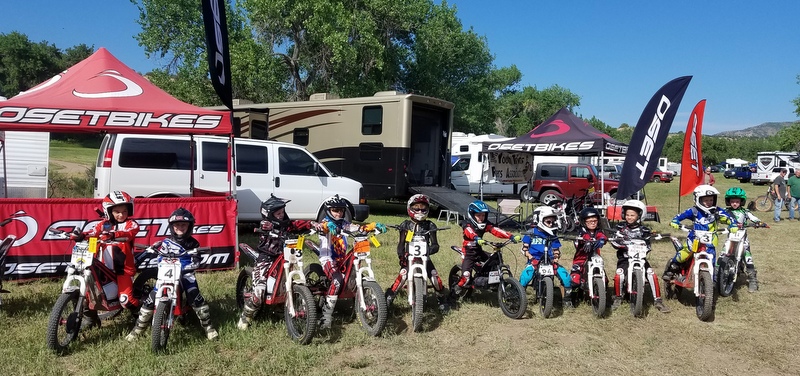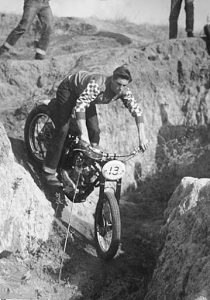In the years prior to 1969, trials on the front range of Colorado were very randomly held events by dealers or clubs and based around novice or beginner rider’s abilities. A unique piece of ground was opened for motorcycle racing in the late ‘60s near Lafayette called Coal Creek Raceway. This had many natural banks and small gullies that encouraged trials. A fellow surfaced that had an unusual ability to create entertaining and challenging sections beyond the natural offering of the terrain. His name was Jon Callihan. He organized near monthly trials. Wiltz Wagner was one of the riders to get caught up in this finally developing sport of trials at Coal Creek. Bill Brokaw, a three time southern California trials champion had moved to Colorado and was enjoying Jon’s handiwork as well and offered schools for the budding trialsmen. Wiltz was the visionary and tossed out some unique ideas for a trials club or association. Brokaw and his wife Annie had started the Southern California Trials Club which may have been the first trials club in America. Jon clearly had enthusiasm for making things happen. The three put their heads together and layed out the format for what would become the R.M.T.A. That was 1969.
Wiltz wanted to test some concepts that were unheard of in motorcycle club organization and his two compatriots were not so caught up in tradition to not go along. The R.M.T.A. was to be run by a steering committee of five members from a region along the front range that would allow them to meet easily. This committee would change annually. No vote on any subject was to ever be taken, rather nothing would happen without a consensus. The organization was to welcome experimentation but not at the base organization level. Awards would be medals only, except for special annual events where winners would also receive traveling awards. The top 40 percent of each class would receive medals. Results would always be published and mailed to members. Members would be expected to participate in setting and running the trials. Training trialsmasters (TMs) was important from the start. The annual Ute Cup Trial was established at the outset as a high elevation 2-day trial on Labor Day weekend. The trial would feature awards of Indian origin with a unique thunderbird medal cast in sterling silver to go to the top 40 percent. This trial was first run in 1970 out of the townsite of Hessie straight west of Boulder with many sections above timberline.
Land was not such a large issue in those early years and long is the list of locations used from north of Ft. Collins south to the Arkansas River valley. Mountain locations were plentiful and without red tape. The early Ute Cups were run with no more than a letter of permission from the local ranger as were other mountain locations. Young’s Gulch, Left Hand Canyon, Millikin, Sprucewood, Waterton Canyon, Green Mountain, Empire, Deer Creek, Rock Creek, Cripple Creek, Victor, Coal Creek, and Christmas Ranch come quickly to mind. Many new locations have replaced these wonderful locations to prove the ability of the R.M.T.A. to cope with the loss of ground for various reasons.
In the early years the R.M.T.A. events pulled close to a hundred riders. Trials bikes were simpler and relatively inexpensive. The popularity of the new bikes for trail riding were a great stepping stone for many to move into trials. Eventually this rush of new riders slowed to a trickle and the entries slide to half the glory years. Recent years have seen attendance fluctuate between 40 and 70 riders for most events. On a very positive note, the RMTA boasts a large number of junior riders moving their way up through the classes.

Wiltz Wagner again saw a need for a national trials group and was instrumental in forming the North American Trials Council in 1973 to create and manage a national championship trials series. Many principles of the R.M.T.A. were used in this new and still continuing group. From the outset, the R.M.T.A. was the single most active club in America with it’s willingness to hold national championship events, even though the annual Ute Cup had become America’s premier non-championship trial. In 1979 the R.M.T.A. held a round of the world championship at Christmas Ranch. It was highly successful despite being in danger of cancellation by the Pueblo County government to within six weeks of the event. Although never having produced a national champion, the R.M.T.A. stands tall in the national picture frequently winning best trial of the series. Many R.M.T.A. riders have finished high in the nationals with many support class champions coming from this club.



